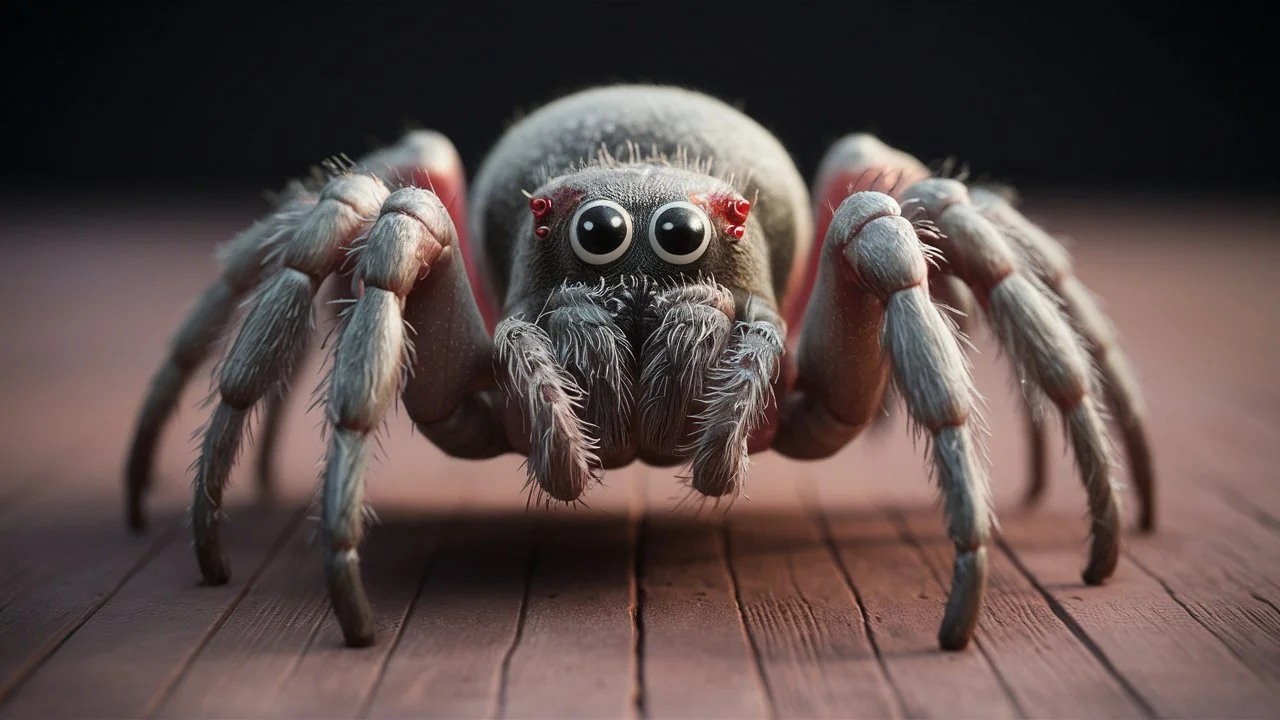Spiders are truly remarkable creatures, often misunderstood and unfairly feared. Through their fascinating behaviors, unique adaptations, and beneficial roles in the ecosystem, spiders play a vital part in maintaining the balance of nature. From the intricate webs they weave to their potent venoms, spiders captivate our imagination and inspire scientific curiosity.
1. Spider Basics 🕷️
- Spiders are arachnids, not insects.
- They have eight legs.
- Two main body parts: cephalothorax and abdomen.
- Spiders have silk-producing glands called spinnerets.
- Over 45,000 species of spiders exist worldwide.
- They can be found on every continent except Antarctica.
- Spiders are known for their eight eyes, although some have fewer.
- Most spiders don’t live longer than a year.
- They primarily eat insects and other small invertebrates.
- Spiders can vary greatly in size, from tiny to large.
2. Spider Silk Secrets 🧵
- Spider silk is stronger than steel for its weight.
- It’s made of protein.
- Spiders produce different types of silk for different purposes.
- Dragline silk is used for the web’s frame and lifeline.
- Capture silk is sticky to trap prey.
- Some spiders use silk to create shelters.
- Silk can be recycled by eating it.
- Ballooning involves using silk to catch the wind and travel.
- Silk is extremely elastic.
- Scientists are studying spider silk for medical applications.
3. Amazing Webs 🌐

- Orb webs are the classic spiral webs.
- Sheet webs are flat and built close to the ground.
- Funnel webs lead into a tube where the spider hides.
- Cobwebs are irregular and messy.
- Some spiders build temporary webs.
- Webs can be used to catch prey or as a home.
- Webs are often invisible to insects.
- Golden orb-weaver silk can appear golden in sunlight.
- Some webs are decorated with stabilimenta.
- Web-building is an inherited behavior.
4. Venomous Varieties 🩸
- All spiders have venom.
- Only a few species are dangerous to humans.
- The black widow has a potent venom.
- The brown recluse can cause severe necrotic lesions.
- Funnel-web spider bites can be fatal.
- Brazilian wandering spiders are highly venomous.
- Most spiders’ venom is designed to immobilize prey.
- Venom composition can vary greatly.
- Some spiders use venom to pre-digest their food.
- Spider venom is being researched for medical uses.
5. Spider Behavior 🤔
- Some spiders are solitary, while others are social.
- Mating rituals can be complex.
- Male spiders often perform courtship dances.
- Cannibalism is common, especially among females.
- Spiders can show parental care.
- Molting is necessary for growth.
- Some spiders can regrow lost limbs.
- Spiders can live in various habitats.
- They use vibrations to detect prey.
- Spiders are generally nocturnal.
6. Record Breakers 🏆
- The Goliath birdeater is the largest spider by mass.
- The giant huntsman spider has the largest leg span.
- The smallest spider is the Patu digua.
- The longest-living spider can live up to 25 years.
- Darwin’s bark spider produces the toughest silk.
- The most venomous spider is the Brazilian wandering spider.
- Peacock spiders are known for their vibrant colors.
- Jumping spiders have the best vision among spiders.
- Trapdoor spiders build the most complex burrows.
- Water spiders can live underwater using a silk air bubble.
7. Spider Senses 🧠
- Spiders rely on vibration for hunting.
- They have simple eyes.
- Some spiders have excellent color vision.
- Spiders can sense chemicals with their legs.
- They have sensitive hairs on their legs.
- Jumping spiders have a keen sense of sight.
- Tactile hairs help spiders feel their environment.
- Spiders can detect changes in air pressure.
- Thermosensitive pits can detect heat.
- Some spiders use UV light for navigation.
8. Unusual Hunting Techniques 🎣
- Trapdoor spiders ambush prey from a hidden burrow.
- Net-casting spiders throw a web to catch prey.
- Bolas spiders use a sticky ball to catch moths.
- Fishing spiders hunt aquatic prey.
- Spitting spiders spit a sticky substance to immobilize prey.
- Jumping spiders pounce on their prey.
- Wolf spiders chase down their prey.
- Crab spiders camouflage themselves to ambush prey.
- Orb-weaver spiders rely on their webs to catch prey.
- Pirate spiders steal prey from other spiders’ webs.
9. Spider Reproduction 💕
- Spiders use complex courtship rituals.
- Males often perform dances to attract females.
- Sperm webs are used by males to transfer sperm.
- Female spiders lay egg sacs.
- Cannibalism can occur during mating.
- Some male spiders offer nuptial gifts.
- Spiderlings disperse by ballooning.
- Maternal care is seen in some species.
- Male dwarf spiders can guard the female after mating.
- Spiders have short lifespans after reproducing.
10. Spider Myths and Legends 🕵️♂️
- The myth of the spider as a bloodsucker is false.
- Spiders do not lay eggs in human skin.
- The tarantella dance was inspired by the bite of the tarantula.
- Arachne’s myth explains the origin of spiders.
- Spiders are often considered omens of good luck.
- In some cultures, spiders are symbols of patience.
- The ancient Egyptians associated spiders with the goddess Neith.
- Spiders are featured in many folktales.
- Some believe spiders bring wealth.
- The belief that spiders are evil is unfounded.
11. Spiders in Popular Culture 🎬
- Spider-Man is a famous superhero.
- Charlotte’s Web features a kind spider.
- Harry Potter has Aragog, a giant spider.
- The Lord of the Rings includes Shelob.
- The movie Arachnophobia plays on the fear of spiders.
- Spider symbolism is used in literature.
- Marvel and DC have multiple spider-related characters.
- Spiders are common in horror genres.
- Video games often feature spiders as enemies.
- Spiders in mythology appear worldwide.
12. Health Benefits of Spiders 🌿
- Spiders help control insect populations.
- Their venom is used in medical research.
- Spider silk is studied for biomaterials.
- Spider bites are rare and usually harmless.
- Spiders eat mosquitoes, reducing disease spread.
- They help maintain ecological balance.
- Spider venom can be used to develop painkillers.
- Spiders contribute to biodiversity.
- They are part of natural pest control.
- Spiders reduce crop damage by eating pests.
13. Spiders and Technology 🖥️
- Robots are inspired by spider movement.
- Web structures inspire architectural designs.
- Spider silk is being developed for strong, lightweight materials.
- Bioengineering uses spider genes.
- 3D printing can mimic spider silk properties.
- Artificial intelligence models spider behavior.
- Surveillance tech uses spider-like movement.
- Spider robots are used for search and rescue.
- Silk-based materials are used in biomedicine.
- Nanotechnology mimics spider silk structure.
14. Environmental Impact 🌍
- Spiders are indicators of ecosystem health.
- Habitat destruction threatens spider populations.
- Climate change affects spider behavior.
- Spiders help control pest populations.
- Biodiversity loss impacts spider diversity.
- Pollution can affect spiders and their prey.
- Spiders contribute to soil health.
- Conservation efforts are crucial for spiders.
- Spiders play a role in pollination.
- Invasive species can disrupt spider habitats.
15. Common Spider Misconceptions ❌
- Spiders are not insects.
- Most spiders are harmless to humans.
- Daddy longlegs are not true spiders.
- Spiders do not intentionally bite humans.
- Tarantulas are not deadly.
- Spiders are beneficial in homes.
- Cobwebs are not always abandoned webs.
- Spiders are not attracted to dirty homes.
- Spiders do not lay eggs in hair.
- Killing spiders can increase pest populations.
16. Spider Research 🔬
- Arachnology is the study of spiders.
- Researchers study spider behavior.
- Venom is analyzed for medical uses.
- Silk properties are extensively researched.
- Spiders are used to study genetics.
- Field studies track spider populations.
- Laboratory experiments test spider responses.
- Spider fossils provide evolutionary insights.
- Biodiversity surveys include spider species.
- Citizen science projects often include spiders.
17. Spider Defense Mechanisms 🛡️
- Spiders use camouflage to hide.
- Venom is used for defense.
- Some spiders can play dead.
- Silk retreats provide protection.
- Speed helps in escaping predators.
- Mimicry deters threats.
- Defensive postures can scare predators.
- Autotomy allows leg shedding.
- Chemical defenses deter predators.
- Warning colors signal toxicity.
18. Spiders as Pets 🏡
- Tarantulas are popular pets.
- Wolf spiders can be kept as pets.
- Jumping spiders are interactive pets.
- Orb-weavers are low maintenance.
- Proper housing is essential.
- Feeding should mimic natural diets.
- Handling should be minimal.
- Health monitoring is crucial.
- Pet spiders can live for years.
- Spider care requires research and commitment.
19. Spider Conservation Efforts 🌱
- Habitat preservation is crucial.
- Captive breeding programs exist for rare species.
- Environmental education raises awareness.
- Legislation protects spider habitats.
- Research grants support arachnology.
- Citizen science helps track populations.
- Urban planning considers spider habitats.
- Botanical gardens host spider habitats.
- Pollution control benefits spiders.
- Global cooperation is essential for conservation.
20. Fun Spider Trivia 🥳
- Spiders can have up to 12 eyes.
- The world’s oldest spider lived to be 43 years old.
- Some spiders can fly using ballooning.
- Spiders have blue blood.
- Peacock spiders dance to attract mates.
- Bagheera kiplingi is a vegetarian spider.
- Tarantulas can regenerate lost limbs.
- Spiders recycle silk by eating it.
- Spider webs were used as bandages in ancient times.
- Huntsman spiders can run sideways.
Conclusion: 🕸️
Spiders are truly remarkable creatures, often misunderstood and unfairly feared. Through their fascinating behaviors, unique adaptations, and beneficial roles in the ecosystem, spiders play a vital part in maintaining the balance of nature. From the intricate webs they weave to their potent venoms, spiders captivate our imagination and inspire scientific curiosity.
With each thread of knowledge, we grow to appreciate these eight-legged wonders, recognizing their importance and beauty in the intricate web of life


